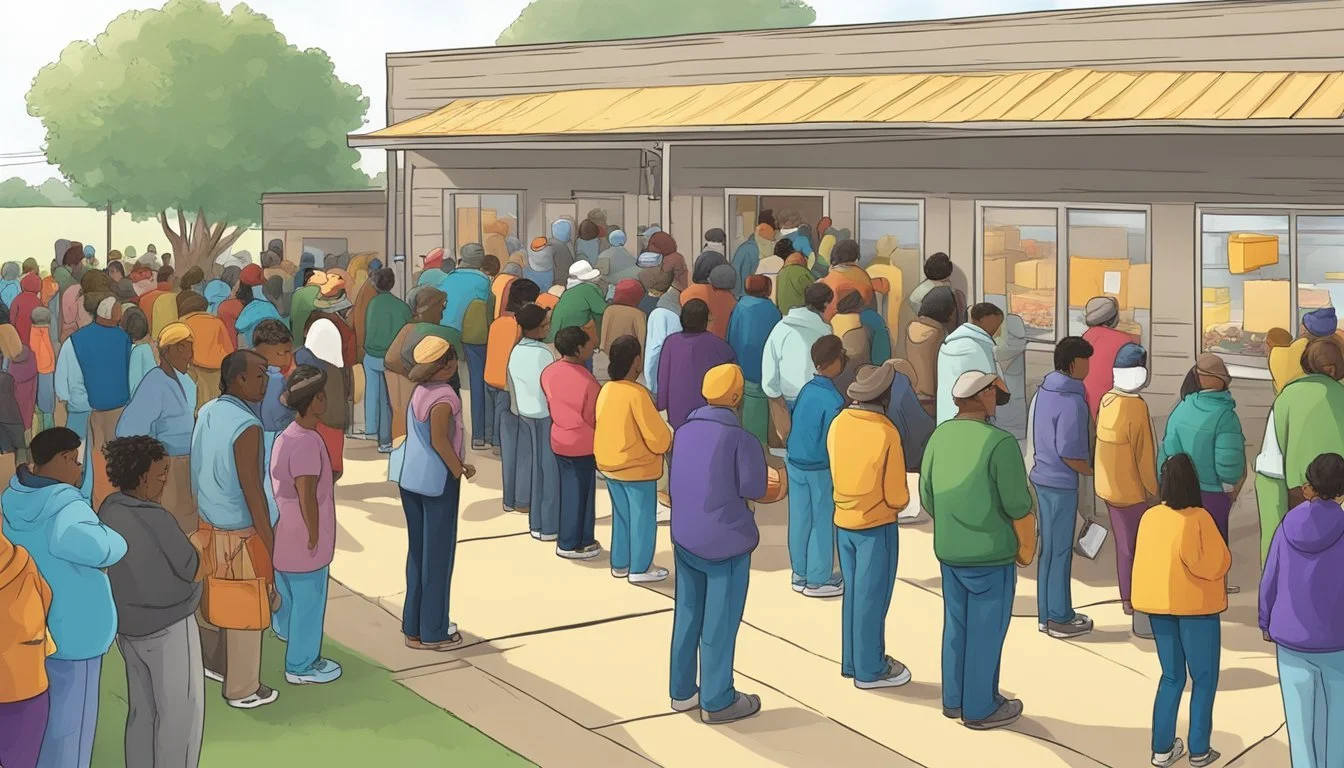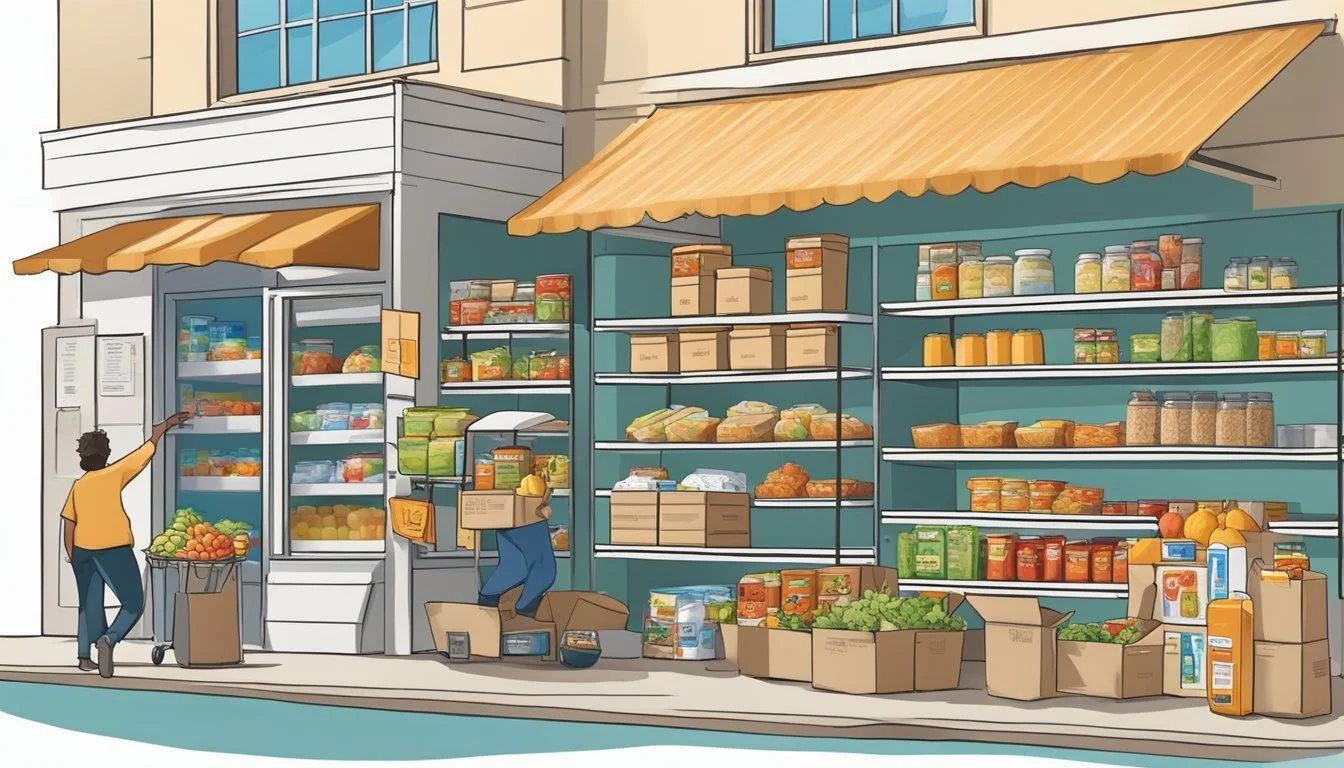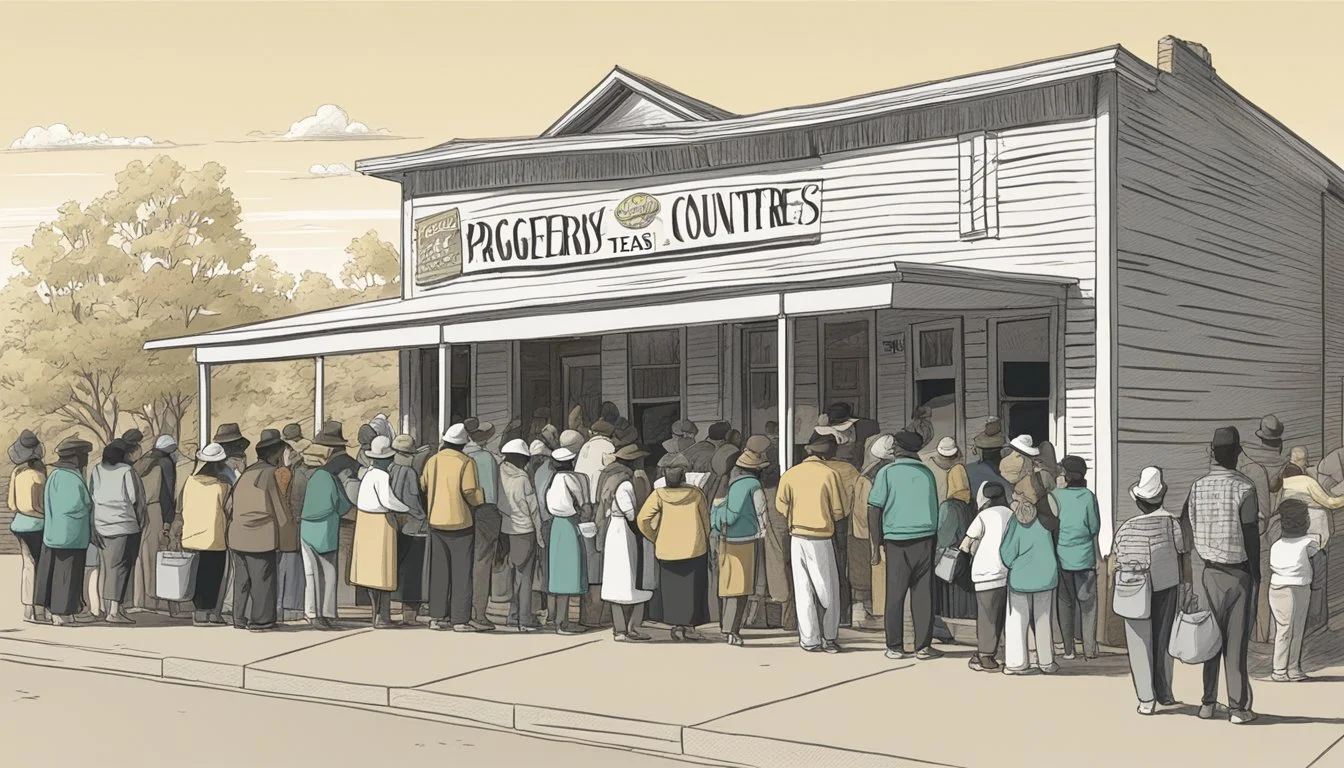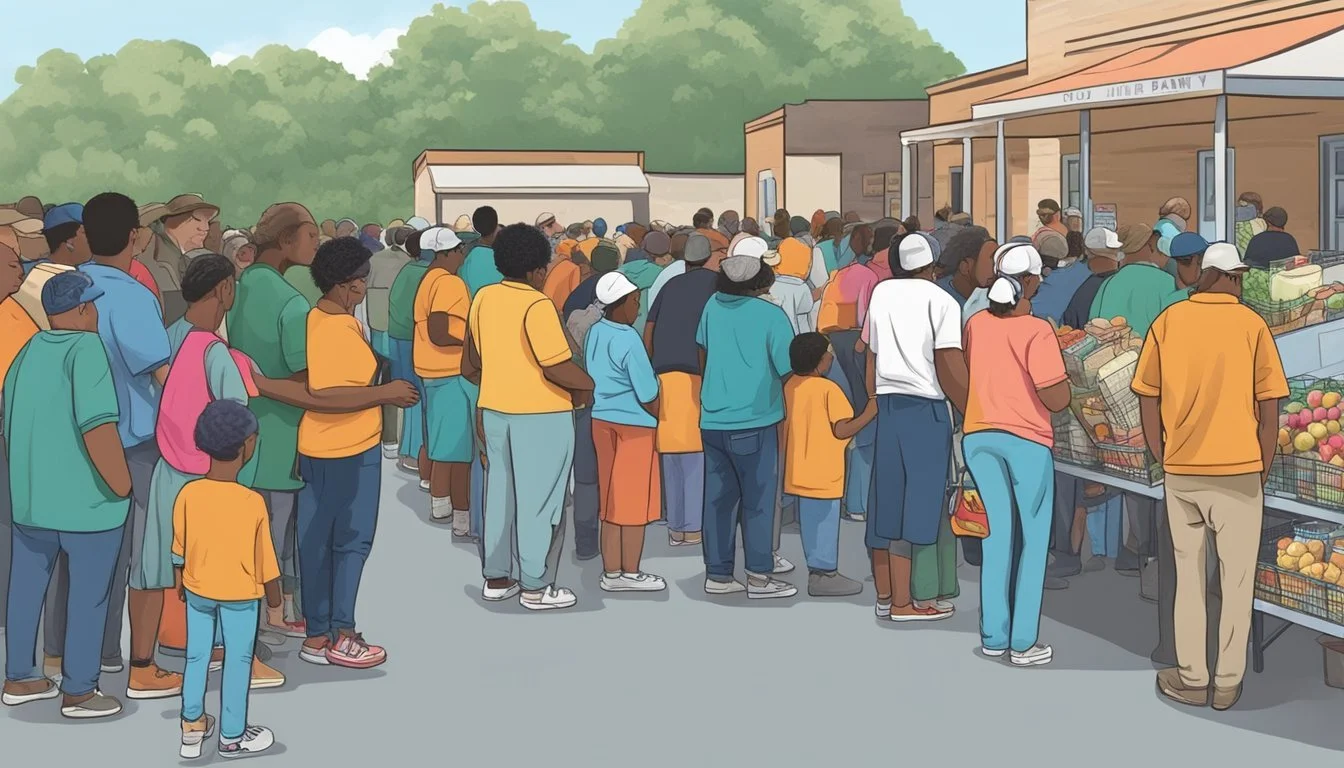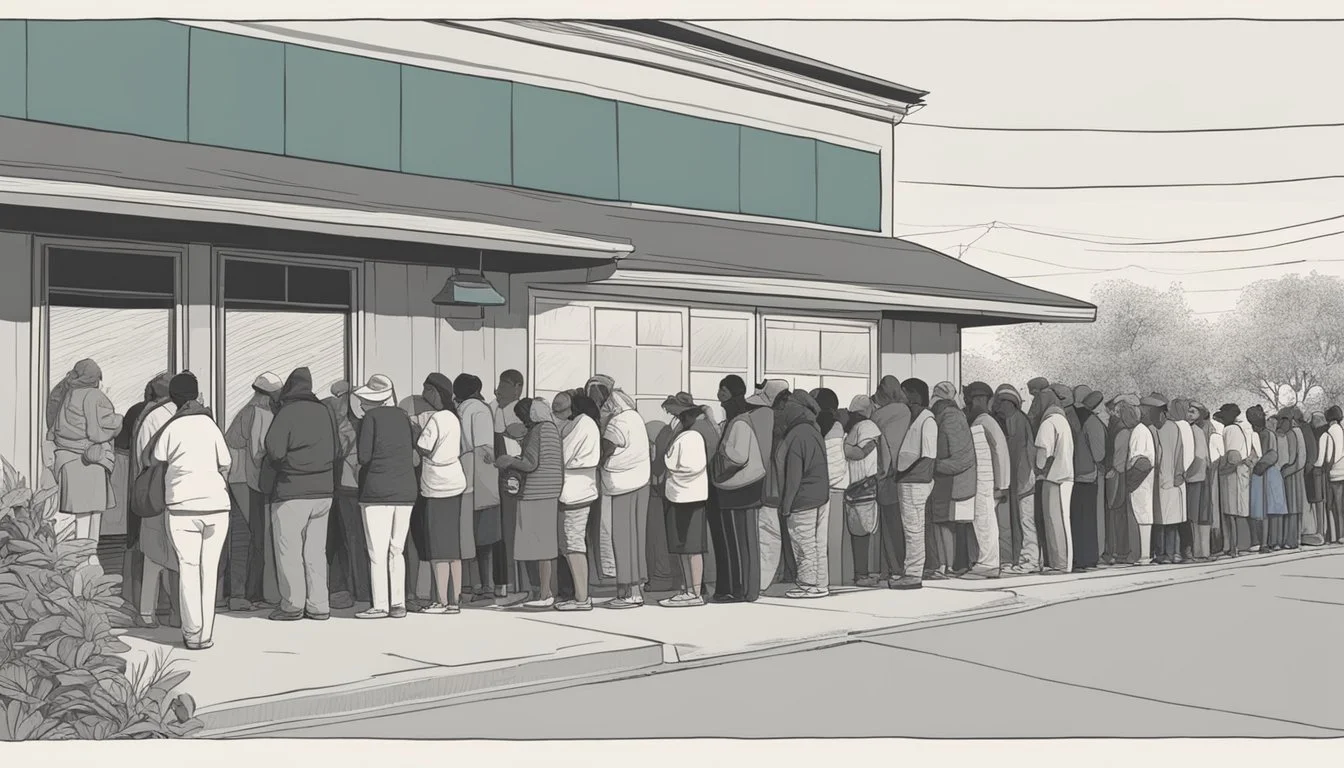Free Groceries and Food Pantries in Young County, Texas
A Guide to Local Assistance Programs
This Article is Part of Our Guide on Free Groceries in Texas
In Young County, Texas, residents facing food insecurity have access to a network of food pantries and sources for free groceries. These services are designed to provide a steady support to individuals and families in need, ensuring that no one in the community goes hungry. By connecting with local food banks, soup kitchens, and various meal programs, these pantries offer a range of assistance from fresh produce to non-perishable items.
The efficacy of Young County's food assistance is rooted in the collaboration with organizations like Feeding America, which partner with local food banks. This partnership enables a widespread reach to those in distress and facilitates immediate access to food resources. For many, these pantries are more than just a place to receive free groceries; they represent a lifeline during times of financial strain or crisis.
Navigating the services offered by food pantries in Young County is made easier through comprehensive guides that provide information on locations, operation hours, and eligibility requirements. With the primary goal of alleviating hunger, these pantries are a vital component in the county's efforts to foster a nourished and thriving community. Through dedicated service and community support, Young County ensures that its residents have the essential resources for sustenance.
Understanding Food Insecurity in Young County
Food insecurity in Young County, Texas, presents critical challenges, particularly in areas where access to affordable, nutritious food is scarce and where certain populations are more vulnerable.
Food Deserts and Limited Resources
In Young County, areas known as food deserts significantly contribute to food insecurity. These places lack grocery stores within a convenient traveling distance, forcing residents to rely on smaller stores that may have a limited selection of healthy foods. Consequently, this can lead to nutritional deficiencies and health problems within the community. The local food bank and food pantries often step in to alleviate these challenges, but despite their efforts, geographic and resource limitations persist.
Demographics of Affected Populations
The demographics most affected by food insecurity include low-income families, the elderly, and children. Economic factors, such as unemployment or underemployment, commonly exacerbate the struggle to obtain sufficient food. Nonprofit organizations and community programs like SNAP and WIC play a crucial role in providing aid to these vulnerable groups, yet the demand often outstrips the available support.
The Role of Nonprofit Organizations
Nonprofit organizations are pivotal in combating food insecurity in Young County. These entities, including local food banks and food pantries, work tirelessly to distribute food to those in need. Their services are crucial for bridging the gaps left by food deserts and provide a range of support, from direct food assistance to nutritional education and community outreach programs. By collaborating with national networks and local volunteers, these organizations strive to offer sustainable solutions for food insecurity.
List of Food Pantries in Young County
Residents of Young County have several food pantry options to access free groceries and support. Each food pantry operates with specific hours and procedures to ensure those in need receive assistance.
Olney Community Food Pantry
Olney Community Food Pantry provides an essential service to residents in the area. Location: Located centrally within Olney for easier accessibility. Hours: Specific operating hours can be obtained by contacting the pantry directly. Contact Information: To find out more about their services, residents can reach out to the pantry's main line for up-to-date details.
Graham Area Food Distribution Center
The Graham Area Food Distribution Center serves individuals and families facing food insecurity. Location: This center is situated in the heart of Graham, Young County. Address: Updated addresses are provided upon contacting the center. Hours: Potential recipients should inquire about distribution schedules and hours of operation. Contact Information: The center has provided contact lines for further inquiries about receiving groceries or volunteer opportunities.
Jacksboro Highway Food Assistance Facility
On Jacksboro Highway, a dedicated facility offers food aid for those in need. Location: The facility is easily accessible for residents along Jacksboro Highway. Hours: Hours of operation vary, so it is best to reach out for current information. Contact Information: A phone number or email is available for community members to learn more about available food assistance services.
Additional Food Assistance Programs
In Young County, Texas, residents benefit from a variety of additional food assistance programs designed to meet the needs of different groups, including seniors and low-income families. These programs provide access to subsidized groceries, meals for seniors, and even clothing and other essentials beyond food aid.
Government Subsidized Groceries Program
Subsidized Groceries: Residents can apply for assistance through SNAP benefits, a federal program that helps low-income individuals and families afford nutritious food. The recent changes post-COVID-19 public health emergency have potentially altered program details, necessitating a check for the updated eligibility criteria.
Meals on Wheels and Senior Food Distribution
Senior Support: The Meals on Wheels Program operates in Young County, specifically offering services like meal delivery to senior citizens. This program caters to the elderly by ensuring they receive regular, nutritious meals without the need for travel.
Clothing Closets and Complementary Services
Additional Aid: Alongside food pantries, Young County offers clothing closets providing free clothing and other necessities to those in need. This service complements the food assistance programs and aims to holistically support the well-being of individuals facing hardship.
How Food Banks Operate
Food banks are essential in the fight against hunger, serving as centralized hubs that collect and distribute food to local communities. Their effectiveness hinges on robust networks and efficient management of resources.
Partnership with Feeding America
Many food banks in the U.S. operate under the larger umbrella of Feeding America, the nation's foremost domestic hunger-relief organization. Through this partnership, they benefit from a vast supply chain network. This network facilitates a consistent distribution of food across various food pantries and meal programs. Feeding America also provides best practices and operational guidance to its member food banks, ensuring a unified approach to combating hunger.
Local Partnerships and Collaborations
On a local level, food banks collaborate with a diverse range of partners including, but not limited to, local businesses, nonprofit organizations, and government agencies. These collaborations can take the form of:
Food donation drives
Volunteer networks
Program funding
Sharing of facilities and resources
Local partnerships are critical as they help tailor the food bank's response to the specific needs of the community they serve.
Donation and Resource Management
Food banks manage a large array of donations, which mainly include non-perishable foods and fresh produce. Donations come from:
Individuals
Businesses
Government agencies
Once donations are received, food banks utilize meticulous inventory systems to track and manage resources, coordinating with local food pantries to ensure that food reaches those in need effectively and safely.
Volunteering and Community Support
Food banks and pantries in Young County, Texas, are bolstered by the spirit of volunteering and the solidarity of the community. This commitment ensures that those in need have access to essential nourishment.
Volunteer Opportunities at Food Banks and Pantries
Within Young County, residents have the opportunity to contribute their time and effort at various food banks and pantries. Volunteers play a crucial role in the operations, from sorting and packing donations to assisting with distribution. The local branches of Feeding America, for instance, are consistently in need of volunteers to sustain their day-to-day activities and special events.
Sorting and Packing: Volunteers can help organize and prepare food items for distribution.
Distribution: Hands-on assistance during food giveaways is critical.
Community Driven Food Drives
Community members frequently organize food drives to support food banks and pantries. These initiatives are critical for keeping the shelves stocked and providing a diverse array of food options to recipients.
Collection: Setting up collection points at local businesses or community centers.
Promotion: Spreading the word to encourage wide participation.
The Importance of Local Support
The local support in Young County provides more than just food; it is a testament to the community's resilience and compassion. A strong network of support ensures that resources are available to those facing food insecurity and strengthens the collective effort to combat hunger.
Resource Gathering: Leveraging local resources to address the community's needs.
Networking: Building relationships among volunteers, donors, and recipients.
Volunteers and community support are the backbone of successful food assistance programs, and Young County is a shining example of this collaborative effort in action.
Finding Food Pantries Online
Individuals in need of food assistance in Young County, Texas, benefit from a variety of online tools that allow them to locate food pantries quickly and efficiently.
Search Engines and Food Assistance Databases
Search engines serve as powerful starting points on the internet for finding detailed listings of food assistance providers. A person can easily access comprehensive databases such as the one provided by Feeding America by entering relevant keywords in search engines. These databases typically allow users to search by zip code, offering immediate access to a curated list of food pantries and free grocery resources in their vicinity.
Local Listings and Referral Services
In addition to national databases, many local listings and community service websites provide referrals to food assistance programs. Services like 211 act as a pivotal referral hotline that individuals can call for free to receive personalized recommendations based on their location and needs. This service is especially useful for those who require a more tailored approach to finding food pantries within Young County.
Social Media and Internet Resources
Social media platforms and various internet resources often offer immediate updates on food pantry locations, operation hours, and availability of items. Community groups and local nonprofit organizations frequently utilize platforms such as Facebook to keep residents informed. Moreover, these resources can reveal new and temporary food assistance events that may not be listed in traditional databases yet.
By leveraging these online tools and resources, those in need of food assistance in Young County, Texas, can find relevant and updated information to help them access the support they need.
Types of Food Aid and Distribution Models
In Young County, Texas, Residents facing food insecurity have access to various forms of aid. These include drive-thru pantry services, fixed and mobile food shelves, and targeted holiday and emergency food assistance.
Drive-Thru Pantry Services
Drive-thru pantry services in Young County offer a convenient, contactless method for families to receive food aid. Clients remain in their vehicles while volunteers load pre-selected or pre-packed bags of groceries. This distribution model minimizes contact and can quickly serve a large volume of people, ensuring efficiency and safety.
Fixed and Mobile Food Shelves
Fixed food shelves operate at permanent locations where individuals and families can select food items similar to shopping at a grocery store. Meanwhile, mobile food shelves extend services to hard-to-reach areas, delivering essentials to residents who might otherwise lack access. Both models provide choice and dignity to clients, allowing them to select food that meets their preferences and dietary needs.
Holiday and Emergency Food Assistance
During holidays and times of crisis, Young County's food aid organizations ramp up efforts to meet increased demand. Special distributions often include seasonal items, ensuring that all residents have the opportunity to celebrate regardless of economic status. Emergency food assistance responds to unexpected hardships, like natural disasters or pandemics, guaranteeing a swift and robust supply of essentials to those affected.
Addressing the Challenges in Food Assistance
Food assistance in Young County, Texas, faces challenges such as accessibility, nutritional education, and stigma. Addressing these hurdles requires comprehensive policy initiatives, community-centric educational programs, and efforts to reduce the stigma associated with food aid.
Policy Initiatives for Better Food Accessibility
Administrative strategies play a crucial role in improving food assistance accessibility. By implementing policies that encourage the establishment of more food pantries and facilitate the distribution of fresh foods, Young County can ensure that assistance reaches a wider population. Local governments might consider subsidizing transportation for individuals without access to food distribution centers or collaborating with delivery services to reach homebound residents.
Nutritional Education and Awareness
Nutritional education is pivotal for maximizing the benefits of food assistance programs. It's essential to inform recipients about making healthy food choices and to provide them with the knowledge to utilize food items effectively. To this end, food pantries in Young County could partner with nutritionists to offer workshops and produce informative materials that promote a balanced diet.
Educational Materials: Flyers, recipes, and meal plans.
Workshops: Monthly meetings addressing diet and health.
Addressing the Stigma Around Food Aid
Stigma often discourages individuals from seeking the help they need. Combatting this issue demands a multifaceted approach, including discreet avenues of assistance and community support. Food pantries might offer anonymous services or set up discreet pick-up points to maintain confidentiality. Additionally, public campaigns that frame food assistance as a community resource rather than a last resort can help in normalizing its use.
Discreet Aid Options: Home deliveries, private pick-up locations.
Public Campaigns: Stories of diverse beneficiaries, educational ads.


